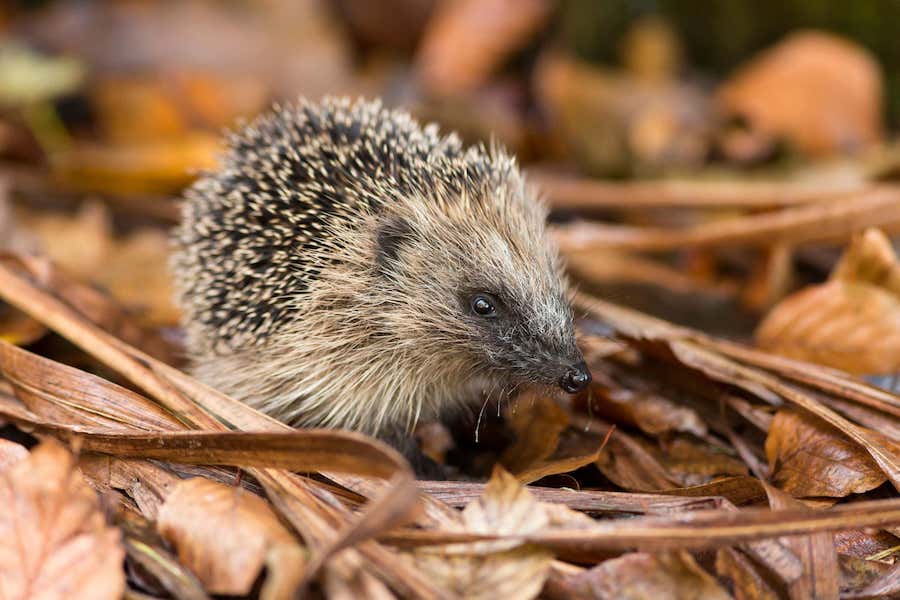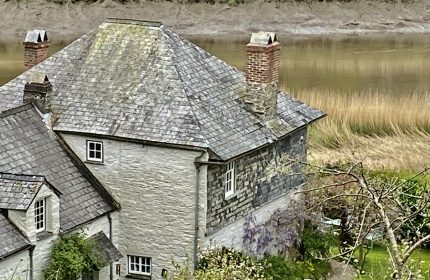Why you shouldn’t tidy your garden too much in autumn
Give hibernating creatures a chance, say experts
It’s time for the great autumn clear-up in your garden, when furniture and tools are put away, leaves are raked and perennials cut back.
But experts are advising gardeners not to tidy up too much.
Some of your debris could be left to provide food and shelter for overwintering insects, birds and mammals, so before you start raking, clearing away prunings and starting that autumn bonfire, spare a thought for our native wildlife.
Pile up your leaves
“Hibernating mammals, such as hedgehogs, frogs or toads will use leaf piles to create a nest where they will stay throughout winter, while insects and invertebrates will love the dark, damp nooks and crannies that it has to offer,” Eric Michels, head of pro at CJ Wildlife advises.

Raking the leaves is a usual autumn gardening job
“In turn, this will encourage birds such as robins and sparrows to visit your garden to forage for worms and bugs in the leaf layer.
“Simply gather the leaves and dead organic matter from your garden or outdoor space and arrange them in a pile – don’t worry if your pile looks rustic, as long as it is large enough to allow wildlife to burrow within the materials, animals will love it!
“If you have any logs or fallen branches, place these next to the leaf pile to provide additional shelter and security, and make sure it is located in a quiet corner of the garden where visitors can stay undisturbed throughout winter. Come springtime, remember to check leaf piles for any animals before moving or mulching.”
Leave seedheads

Goldfinch will feast on teasel seedheads
At this time of year, you may be tempted to chop down all your spent perennials, but leave seedheads on plants such as rudbeckia, echinacea, teasels and helenium, because they will provide food for the birds, the RSPB advises.
Stems can also hold insect larvae and eggs, and shield the soil from the winter elements, the charity adds.
Let wildlife shelter in log piles

Log piles make great bug hotels
“Broken twigs and old logs make an ideal shelter for many species, the rotting wood and brittle bark create cosy gaps for insects to hide in, while offering mammals a dry and secure habitat over the winter,” says Michels.
“Log piles also provide birds and amphibians with a source of food, as they search the debris for any insects which might be lurking inside.
“It’s important to keep the log pile in a quiet and sheltered part of the garden, as many species won’t stay if it is too noisy or there is too much activity nearby. A variation of small twigs and large logs creates the best shelter and larger logs can be wedged into the soil so they stay damp.”
Bring insect hotels indoors

Try to keep bug hotels dry in winter
“Insect hotels are a great way to offer bugs refuge through the summer, but many people don’t know that they should be kept in dry places over the winter months, like in the shed. This helps keep the hotels dry and in good condition, it also helps prevent fungal infections for bees that might be nesting inside,” says Michels.
“Do not be tempted to bring the insect hotel into the house though – the warmth of our homes might encourage bees to emerge from their nest early. The insect hotel can be placed back into the garden around March once the weather is warmer.”
Avoid bonfires

Check for hedgehogs before starting a bonfire
You may want to burn your garden debris, but bonfire sites, which are often set up a few days in advance, provide a hedgehog hideaway for hibernation as well as shelter for amphibians and reptiles.
So if you really have to build it beforehand, surround it with newt fencing and make sure there’s no hedgehog sheltering in it before you start, advises campaign group Hedgehog Street.
Let ivy grow
It can be the bane of a gardener’s life, but ivy is an essential food source for birds and provides shelter for insects and bats in the autumn and winter months, says The Woodland Trust.

Red admirals will feast on ivy flowers
If you leave ivy to do its thing, its autumn flowers provide a haven to butterflies such as red admiral and moths, while it will produce calorie-rich berries in November which will attract song thrush, redwing and blackbird among others, as well as shelter for brimstone butterflies and small bats.
The Press Association
Latest posts by The Press Association (see all)
- William and Kate celebrate 13th wedding anniversary - April 29, 2024
- Dame Kelly Holmes: ‘Getting old is a privilege but ageing I don’t like’ - April 27, 2024
- 9 of the most iconic dance scenes in movies - April 27, 2024
- Why is melanoma on the rise? As new personalised ‘gamechanger’ skin cancer jab is tested - April 27, 2024
- King to resume public duties after positive cancer treatment - April 26, 2024





















